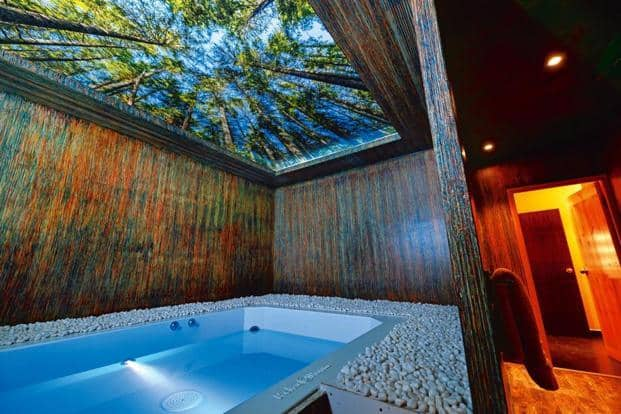But can you make your mind float?
You can now step into Dead Sea-like float tanks or sensory deprivation tanks in Pune, Bengaluru and Delhi

Make sure your face is completely dry after you shower and before you step into the tank." This was Chirag Lilaramani’s chief instruction to me in the 45-minute briefing session before I stepped into the float tank at Liquid Sanctuary, his newly opened floatation centre in Delhi, the Capital’s first.
A standard float tank is filled with 10ft of highly concentrated Epsom salt solution (approximately 750kg of magnesium sulphate), which creates a buoyancy that allows you to float effortlessly—ocean water is about 3% salt, float tanks are about 35%, much like the Dead Sea.
Lilaramani had anticipated, correctly, that asking people to step into a float tank, also known as “sensory deprivation tanks" or “isolation tanks", in a pitch-dark, soundproof room for an hour would require some preparation. I, however, had thought he was mansplaining. I wasn’t afraid of the dark or quiet. I had done a 10-day Vipassana programme when I was 20.
In my indignation, I missed following his instruction. Also, I was eager to get started. Since I cannot swim, the idea of floating in a safe indoor chamber held a special attraction.
So it was only after I was in the tank that I remembered I was supposed to dry my face. Going pitch-dark was optional; there were two levels of light controls. Obviously, I had chosen to go all out. Imagine trying to step out of a regular swimming pool in the dark and looking for a towel. Now imagine doing this with excessively salty, slimy water in the picture. I wholly advise listening to instructions carefully before stepping into a float tank.
Designed in 1954 by the American neuroscientist and writer John C. Lilly, who is known for his work with dolphin communication, float tanks were created to eliminate sensory stimuli and encourage relaxation and meditative states. While there is scientific documentation of floatation therapy being used to help patients with post-traumatic stress disorder (PTSD), insomnia, fibromyalgia and anxiety, its recreational uses are more recent. A 2015 Time magazine article says there were 85 float centres in the US in 2011, and more than 250 by 2015. Apart from Liquid Sanctuary, which opened this April, there are three other float centres in India, all less than two years old: Shalom Float & Mind Spa and Relax Essence Float Spa in Pune, and 1000 Petals in Bengaluru. Lilaramani has recently been commissioned by the Taj Group’s Jiva Spa to set up a floatation centre in Mumbai, scheduled to open later this year.
I spoke to Binny Paul, the Pune-based founder-director of Shalom Float & Mind Spa, the first floatation centre to open in India. Paul has a family business in water treatment solutions and was prompted to create his trademark RelaxoPod three years ago after receiving business enquiries. His RelaxoPod is an oyster-shaped floatation pod that closes in on itself. “Claustrophobia is in the mind," Paul assures me over the phone. While I didn’t need much convincing to step into a float tank, the idea of closing myself in a pod seems less appealing (the centres in Pune and Bengaluru only offer pods, while Liquid Sanctuary has two 5x8ft open tanks). Paul also shares that he has just supplied pods to three more upcoming centres in Mumbai.
Paul has been trying floatation himself for 2 hours a week for the last three years and rates it above a relaxing massage because it allows you to “let go 100%" and offers holistic relaxation for the mind as well as the body. Lilaramani, who hails from New Zealand and got hooked to weekly float sessions back home before deciding to bring them to India, is a big advocate of floatation therapy to treat post-workout pains, hangovers and “focus on a creative project". And the Epsom salt, he says, comes with the added benefit of softening skin and hair.
Both Paul and Lilaramani stress on the uses of floatation as a multipurpose tool to help with everything from chronic backaches to increased concentration. I do feel the novelty factor needs to wear off before one can use floatation as a meditational device. My millennial mind wouldn’t switch off while I was in the tank. All I could think about was what I would write about it. Now that it’s out of the way, I must float again.
She tweets at @aninditaghose
-
FIRST PUBLISHED18.08.2017 | 02:07 PM IST
-
TOPICS
- For all the latest Fashion News, Lifestyle News, Food News, Smart Living, Health Tips, and Relationships, only on Mint Lounge.
